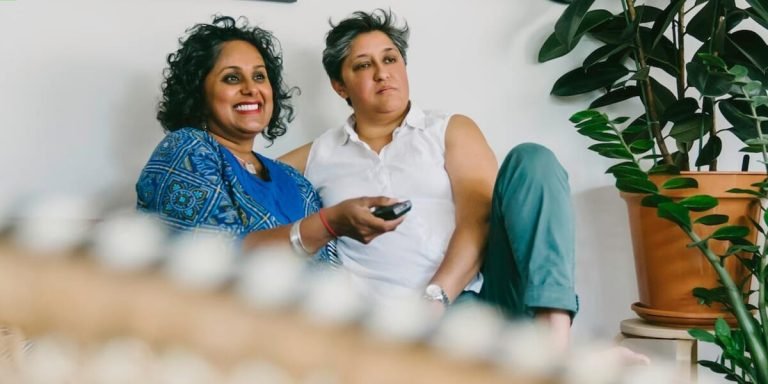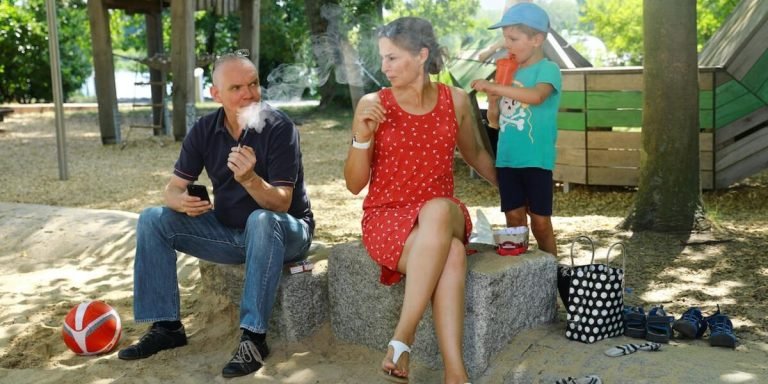Sensory Aversion in Childhood: Understanding and Navigating the Challenge
Sensory aversion, a common occurrence in childhood development, can pose significant challenges for parents and educators. Stemming from the central nervous system’s function of processing sensory input, this condition causes discomfort or distress when confronted with specific stimuli – like certain textures, sounds or smells. Managing these reactions requires insight into child behavior as well as tailored strategies to ensure balanced growth.
This post aims at offering Special Education Resources and Support that will aid adults engaged in the upbringing of children experiencing sensory aversions. By extending an understanding about what triggers such responses to a more profound awareness on how it affects their daily life experiences – we hope to equip caregivers with effective tools for fostering positive interactions amidst this challenge.
Did you know?
Little Known Fact: Sensory aversions in children can occur before 6 months of age with some infants showing distress towards specific textures, sounds or lights – indicative that it’s not just a ‘phase’ they will outgrow.
Understanding Sensory Aversion in Special Education
Understanding sensory aversion in the realm of special education enables educators and parents to implement effective strategies for aiding children’s learning experiences. Sensory aversion refers to a condition where certain textures, sounds, or even lights can be overwhelming or unbearable for an individual. It is often witnessed among students with Autism Spectrum Disorders (ASDs), Attention Deficit Hyperactivity Disorder (ADHD) and specific other conditions.
Recognizing these signs early on significantly improves one’s ability to cope up.
In 2023, as technology continues its integration into education systems worldwide including special education classes, it has brought about more opportunities than ever before for addressing this issue effectively. Digital devices like tablets can be customized according to the needs of a child struggling with sensory issues – decreasing screen brightness, eliminating distracting noises and adjusting text size are some possibilities that were hard-to-imagine previously.
Moreover, advancements have led us towards adaptive tools designed specifically keeping in mind those with sensory difficulties – they include noise-canceling headphones or fidget toys substantially reducing anxiety triggered by loud environments; tactile objects helping them learn through touch without actually touching overwhelming materials—the potential offered here is truly remarkable! However understanding each student’s unique requirements remains critical while integrating such technological resources—it works wonders when applied accurately.
Recognizing the Signs of Sensory Processing Issues
Recognizing the signs of sensory processing issues in children, especially those with special needs, is crucial for their learning development. In a world where technology integration has become an integral part of education, knowing these cues aids educators to design more effective and inclusive teaching methods.
Some typical signs include unusual responses or overreactions when exposed to everyday stimuli such as bright lights or loud noises. Which may be manifested through behaviors deemed excessive by standard measures – avoiding light-touch interactions, seeming overly fidgety during class time or having difficulty focusing on tasks due to background noise.
Another sign could be uncoordinated motor skills which are often attributed wrongly simply because they lack physical agility but might stem from underlying sensory struggles making smooth navigation around objects challenging for them compared to their peers.
Strategies for Supporting Students with Sensory Challenges
Sensory aversion, a common aspect in special education scenarios, can often pose challenges for educators and parents alike. With increased understanding of this phenomenon, it’s become crucial to devise strategies tailored towards children battling sensory struggles.
To begin with, creating an environment that is accommodating for students with sensory aversions is pivotal. This might involve adjusting lights or sounds within the classroom setting or providing them spaces where they feel safe and secure.
With advancements in technology comes more accessible solutions. Technology integration in education has proven beneficial in supporting such students – tools designed specifically to tackle these problems have been increasingly implemented across schools worldwide.
One such tool gaining recognition lately is Virtual Reality (VR). VR headsets allow teachers to simulate custom environments that are less overwhelming for sensitive pupils thus helping alleviate their stress levels significantly during study hours.
Also noteworthy are specialized mobile applications meant exclusively for aiding kids dealing with varying degrees of sensory resistance; from calming noises apps which provide soothing soundscapes aimed at reducing anxiety to tactile sensation related games which help develop touch sensitivity over time through interactive play modes on tablets – tremendous possibilities lie ahead if only we utilize technology efficiently!
Crafting Effective Learning Environments to Mitigate Sensory Aversion
Creating an effective learning environment is essential in mitigating sensory aversion, particularly for children with special needs. In the contemporary landscape of childhood education, technology has emerged as a powerful enabler to provide supportive and interactive spaces that cater to individual students’ unique requirements. It’s about leveraging these tools innovatively so that education becomes not just manageable but also engaging.
In 2023, technological integration in education continues evolving swiftly- becoming more personalized and adaptive than ever before. Modern classrooms now feature smart boards instead of traditional chalkboards; tablets replace notebooks reinforcing dynamic learning experiences beyond static pen-paper methods. Teachers actively use educational software designed specifically for managing sensory aversions – virtual reality programs immersing pupils into calm environments or noise-canceling headphones helping those sensitive to sound focus better during lessons.
Beyond hardware improvements are teaching strategies incorporating tech solutions tailored towards addressing specific issues like tactile defensiveness or auditory sensitivities among learners suffering from Sensory Processing Disorders (SPDs). Using such resources helps bridge gaps between mainstream curriculum instruction techniques and accommodating different learner profiles within the classroom setting itself – thereby promoting inclusivity while upholding quality standards expected from today’s generation schools worldwide.
Incorporating Sensory-Friendly Materials and Tools
Developing a learning environment that is conducive for children with sensory aversion plays an imperative role in their educational journey. By leveraging technology and integrating special education resources, educators can significantly improve the teaching process and child’s study atmosphere.
One of the most effective ways to mitigate sensory aversion is by incorporating sensory-friendly materials and tools in classrooms. There are numerous tech-savvy aids available today that help create a more inclusive space.
Firstly, using noise-cancelling headphones can make all the difference for children who have auditory sensitivity issues or difficulty focusing due to ambient noises. These reduce background sound interference optimally while not completely shutting out crucial sounds such as teacher’s voice or emergency alarms.
Secondly, tactile objects like fidget spinners could be integrated into traditional classroom settings without much effort. The simple act of holding these objects helps students focus by channeling excess energy safely away from disruptive behavior.
Thirdly, weighted lap pads or blankets provide excellent support during circle time reading sessions—offering both comfort and calmness through applied pressure on learners’ laps which minimizes wandering attention rates remarkably.
Other technological advancements like visual timers assist students suffering from anxiety related to transitions between activities keep track of passing time easily without adding stress.
Lastly, specialized software applications play an important part in creating tailored lesson plans catering towards individual needs effectively ensuring curriculum accessibility for everyone irrespective of their unique abilities- optimizing edification potential comprehensively henceforth.
Designing Classroom Spaces That Address Diverse Needs
With rising emphasis on inclusive education, the need to address diverse learning needs in a classroom has emerged as an imperative task for educators worldwide. To ensure every child blossoms, it is important that we make classrooms spaces more accepting and accommodating of different sensory aversions.
Sensory aversion refers to hypersensitivity or over-responsiveness towards certain physical experiences which may range from auditory disturbances, light intensity variations or even touch-based discomforts. In children with conditions like Autism Spectrum Disorder (ASD), this sensitivity can be heightened leading them having anxiety attacks or emotional outbursts disrupting their overall learning process.
In 2023’s technological milieu integrating advancements such as Virtual Reality (VR) and Augmented reality(AR) could greatly aid special-education programs by creating customized digital environments catering to individual sensory concerns. For instance, VR applications programmed with calming ambient noises can help students battling sound-triggered sensory aversions manage better within noisy classroom surroundings.
Apps like ‘Autism Discovery Tool’ offer unique insight into navigating sensory challenges faced by ASD-diagnosed individuals whereas platforms such ‘Sound Scouts’ focus on optimizing hearing impairments through engaging gameplay scenarios – substantiating how technology integration extends beyond traditional teaching infrastructures resulting in significant support resources for handling various forms of ‘sensory averting’.
Collaborative Approaches to Strengthening Support Networks
In the evolving landscape of education, collaborative approaches have become a notable strategy to confront and overcome challenges such as sensory aversion. Sensory aversion is a common issue in children which can manifest through discomfort or anxiety with certain textures, sounds or even lights. Supporting these young learners requires an amalgamation of concerted efforts from parents, teachers as well as therapists.
Emphasizing on this integrative approach has led to the development and implementation of cutting-edge technology into educational frameworks. This intervention not only aims at enhancing learning experiences but also targets individualized needs that arise due to conditions like sensory aversion. Technologies like Virtual Reality (VR) are used extensively for creating immersive environments conducive for students who struggle under typical classroom conditions because they may find them too stimulating.
Moreover, integrating technology isn’t just about addressing issues within special education; it’s also shaping the support networks around these youngsters by fostering greater communication amongst all stakeholders involved – parents, educators and health professionals alike. Online web portals and apps provide platforms where mutually beneficial dialogues occur frequently leading to quicker problem identification & resolution while increasing understanding among members regarding each one’s role in dealing with sensory aversions efficiently.
Establishing Strong Communication Between Educators, Parents, and Therapists
One of the key components to navigating and smoothing a child’s education journey, especially those grappling with sensory aversion, is building strong communication lines among educators, parents, and therapists. These three pillars play an instrumental role in ensuring that children receive optimal support towards their educational pursuits.
To begin with, teachers or educators constitute the front-line workers in this triad. Furnished not just with academic skills but also rich understanding about individual learning styles, they are able to identify any signs of cognitive struggles early on- including those related to sensory aversions. By regularly sharing these observations transparently and promptly can strengthen this supportive network tremendously.
Complementing these efforts further would be input from professional therapists specialising in dealing with kids exhibiting symptoms like sensitivity toward touch or light etc., potentially pointing out missed signals for much-needed interventional approaches while customizing therapy regimes accordingly.
Utilizing Community Resources for Comprehensive Care
Community resources offer a wealth of knowledge and experiences that can help create an enriching environment for special needs children coping with sensory issues in 2023. These assets include local libraries, museums, art galleries or organizations providing occupational therapy services.
Libraries could potentially provide quiet spaces suitable for those experiencing auditory sensitivities while offering educational materials specifically designed around certain types of learning disability concerns too. They also frequently run programs intended to educate everyone about diverse perspectives on disabilities – promoting greater understanding among all members from the wider community.
Museums and art centers often have exhibitions targeted towards kids which are tailored according to different age groups’ sensitivity levels making them accessible options aptly addressing requirements raised by this worrisome concern.
Occupational therapists hold paramount importance within our discussion as they’ve gained proficiency at managing conditions like Sensory Processing Disorder (SPD). They devise activities helping these young learners adapt better leading eventually into enhanced academic performances along with noticeable improvements at personal fronts too!
Conclusion
In summation, tackling sensory aversion in childhood can be a challenging task. However, being armed with knowledge and implementing targeted strategies turns these challenges into surmountable hurdles. Remember – patience is key while dealing with this condition along the education journey.
We encourage you to roam around our website for other helpful resources that cover various topics on child education and provide support for parents as well as educators. With a wealth of information at your fingertips here on our site, we hope to make your journey smoother by making learning more accessible and enjoyable not only for children but also their caregivers too!







